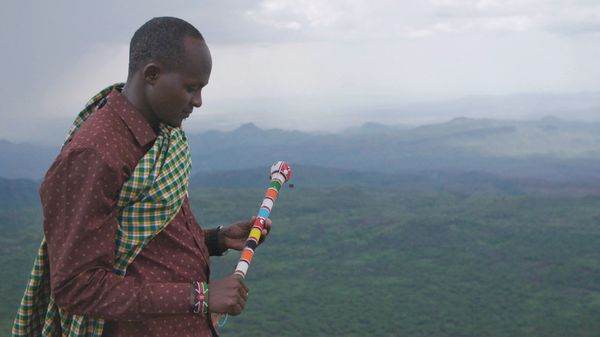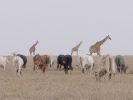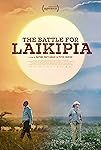Eye For Film >> Movies >> The Battle For Laikipia (2024) Film Review
The Battle For Laikipia
Reviewed by: Amber Wilkinson

Daphne Matziaraki and Peter Murimi take time to assess and follow the situation in Laikipia County in Kenya’s Rift Valley region as frictions over land rise between the indigenous semi-nomadic pastoralists and white land-owning descendants of the colonial era. The documentarians invested several years in the project and it pays off in this impressively balanced assessment of a conflict over land that has been exacerbated by climate change and drought.
The pair gain intimate access to both communities as tensions mount after 2017, not only following events as they unfold but setting them within historical context with judicious use of archive footage. On the one hand are ranchers and wildlife conservancy owners like Maria, who is the third generation of her family to live on the ranch, with her children, including son George, marking the fourth. On the other, are Samburu herders like Simeon, whose universe revolves around their cow herds - as he points out, even their word for “life” is derived from their word for “cattle”.

The herders who have roamed the land with their animals for generations are stymied by the fences the landowners erect. There are reasons for wanting to protect the landscape, not least the conservation of endangered species including the Grévy's zebras who live there, but questions are soon raised about the conservancy owners’ methods. Threats ensue if the Samburu do encroach on the land, with one owner, Tom, telling a child he is cursed for his actions.
Increasingly, there is a sense of a bunker mentality, as the ranchers and conservancy owners beef up security. Meanwhile, among the pastoralists, the lack of rainfall and access to grazing land is becoming an existential threat. The idea of escalation isn’t just notional but brings physical destruction to both communities. It’s certainly possible to feel sorry for the landowner looking at a building on their land which has been raided, although their suggestion that the Samburu don’t care about material possessions reveals myopia. A cow may not sit on a mantelpiece, but it is a cherished possession of a sort and one that the actions of the white community are putting under additional threat.
Matziaraki and Murimi capture the beauty of the landscape and the animals - both of the herded and conserved sort, their cameras aware as lack of rain takes its toll. They also show the warmth of both Maria and Simeon’s family units and the connection that both of them feel to the land.
Violence starts to enter the equation as the ranchers start to equip their teams with guns, while the rhetoric on the Samburu side also escalates as politician Mathew Lempurkel urges the pastoralists to stand their ground. By listening to both sides, Matziaraki and Murimi catch the way that prejudice in both communities - although, rather more obvious in terms of the European descendants - is holding them back from meaningful constructive dialogue. When I talked to the directors, Murimi told me: “Our goal is engaging both sides from a peaceful standpoint.” This thoughtful and nuanced film should certainly help.
Reviewed on: 07 Oct 2024

















